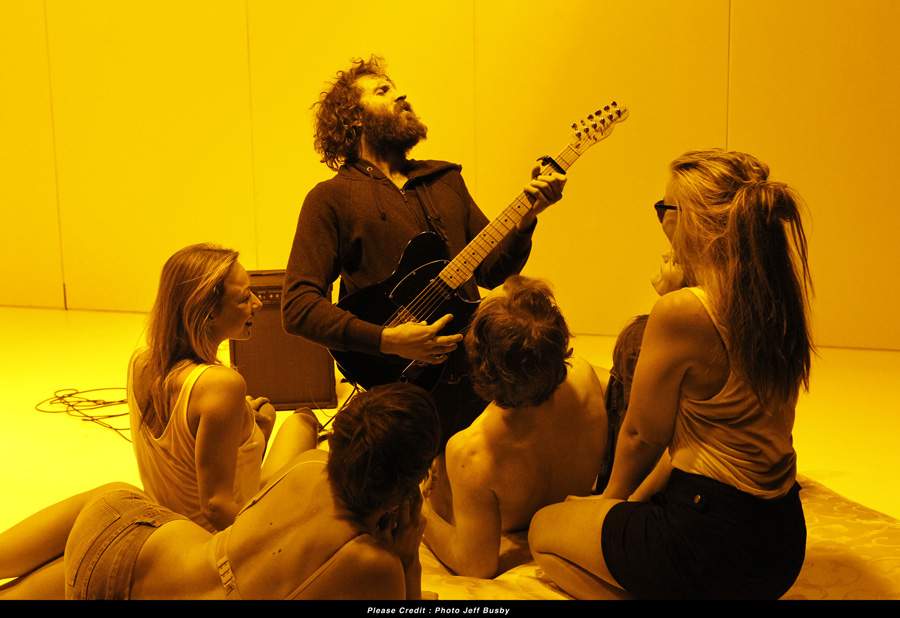Baal
The new Baal looks like an evil Angus Stone, prostrates over his guitar and systematically, callously pushes against everything that wanders into his path.
Overview
Is there such a thing as genius? Or is it just ordinariness that little bit out of sync with its time? In the throes of idolatry, will we rush to elevate even the malformed drafts of a sometimes poet? Do creative acts redeem destructive lives? When an outsider is constantly surrounded by people, is he still alone and untouched? He. How often do we let it be a she?
These are among the questions posed by Baal, the canonically outlying first play of a 20-year-old Bertolt Brecht, as well as a current of literature on the poetic outsider (often nicer, fluffier, more romantic) to which the play responds. The great thing about seeing Baal on the stage now is being reminded that something we may think of as a phenomenon of the now the egotistic, hedonistic or self-destructive pursuit of transcendental expression, and the hangers-on that surround it is not new at all.
While we're bandying about the 'genius' tag, we may as well let it rest on director Simon Stone's decision to adapt this 93-year-old play to a modern world of rock 'n' roll. It's a perfect graft. The new Baal (Thomas M. Wright) looks like an evil Angus Stone, prostrates over his guitar to pick out a feedback-drowned dirge and systematically, callously pushes against everything that wanders into his path. He's beset by fawning PR women, groupies and bandmates, and he fucks or fights them all. With the few select symbols of stubbies and skinny jeans, amps and rain, Baal is resonant and hyper-real, which is, after all, still a kind of real.
You may catch glints of people you've known in its labyrinth, it may be confronting or affecting, but Baal won't exactly be enjoyable. The production is purposely distancing, heightening Baal's isolated and nightmarish world and matching Brecht's eventual devotion to engaging rational rather than emotional responses. So there's a wide moat between the performance space and audience, characters communicate obtusely and over some distances when they're not tangled up in each other's bare limbs, and it all plays out in a series of distorted fragments. Be prepared.
The flipside of this formal exercise is some stunning, visceral and epic moments of theatre. Intense lighting, several varieties of stage rain (each green, we're told), all kinds of nudity and a swift collapse are used, to breathtaking effect. Stone, who adapted this with Tom Wright, has real vision, skill and bravado, which is why he's gone from the Hayloft Project to Belvoir resident director (where he did the impressive Wild Duck) and generally in-demand in four short years. You may not like all his decisions, but it's something of a joy to witness them.





